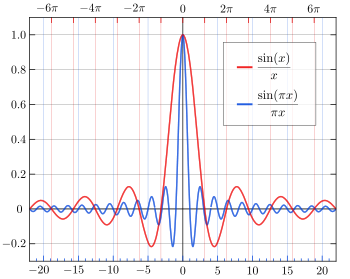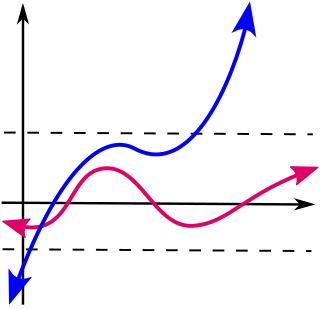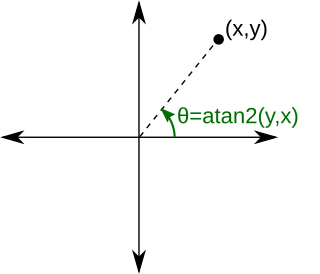Definition
Given an arbitrary set  , a totally ordered set
, a totally ordered set  , and a function,
, and a function,  , the
, the  over some subset
over some subset  of
of  is defined by
is defined by

If  or
or  is clear from the context, then
is clear from the context, then  is often left out, as in
is often left out, as in  In other words,
In other words,  is the set of points
is the set of points  for which
for which  attains the function's largest value (if it exists).
attains the function's largest value (if it exists).  may be the empty set, a singleton, or contain multiple elements.
may be the empty set, a singleton, or contain multiple elements.
In the fields of convex analysis and variational analysis, a slightly different definition is used in the special case where  are the extended real numbers. In this case, if
are the extended real numbers. In this case, if  is identically equal to
is identically equal to  on
on  then
then  (that is,
(that is,  ) and otherwise
) and otherwise  is defined as above, where in this case
is defined as above, where in this case  can also be written as:
can also be written as:

where it is emphasized that this equality involving  holds only when
holds only when  is not identically
is not identically  on
on  .
.
Arg min
The notion of  (or
(or  ), which stands for argument of the minimum, is defined analogously. For instance,
), which stands for argument of the minimum, is defined analogously. For instance,

are points  for which
for which  attains its smallest value. It is the complementary operator of
attains its smallest value. It is the complementary operator of  .
.
In the special case where  are the extended real numbers, if
are the extended real numbers, if  is identically equal to
is identically equal to  on
on  then
then  (that is,
(that is,  ) and otherwise
) and otherwise  is defined as above and moreover, in this case (of
is defined as above and moreover, in this case (of  not identically equal to
not identically equal to  ) it also satisfies:
) it also satisfies:

Examples and properties
For example, if  is
is  then
then  attains its maximum value of
attains its maximum value of  only at the point
only at the point  Thus
Thus

The  operator is different from the
operator is different from the  operator. The
operator. The  operator, when given the same function, returns the maximum value of the function instead of the point or points that cause that function to reach that value; in other words
operator, when given the same function, returns the maximum value of the function instead of the point or points that cause that function to reach that value; in other words
 is the element in
is the element in 
Like  max may be the empty set (in which case the maximum is undefined) or a singleton, but unlike
max may be the empty set (in which case the maximum is undefined) or a singleton, but unlike 
 may not contain multiple elements: [note 2] for example, if
may not contain multiple elements: [note 2] for example, if  is
is  then
then  but
but  because the function attains the same value at every element of
because the function attains the same value at every element of 
Equivalently, if  is the maximum of
is the maximum of  then the
then the  is the level set of the maximum:
is the level set of the maximum:

We can rearrange to give the simple identity [note 3]

If the maximum is reached at a single point then this point is often referred to as the and
and  is considered a point, not a set of points. So, for example,
is considered a point, not a set of points. So, for example,

(rather than the singleton set  ), since the maximum value of
), since the maximum value of  is
is  which occurs for
which occurs for  [note 4] However, in case the maximum is reached at many points,
[note 4] However, in case the maximum is reached at many points,  needs to be considered a set of points.
needs to be considered a set of points.
For example

because the maximum value of  is
is  which occurs on this interval for
which occurs on this interval for  or
or  On the whole real line
On the whole real line
 so an infinite set.
so an infinite set.
Functions need not in general attain a maximum value, and hence the  is sometimes the empty set; for example,
is sometimes the empty set; for example,  since
since  is unbounded on the real line. As another example,
is unbounded on the real line. As another example,  although
although  is bounded by
is bounded by  However, by the extreme value theorem, a continuous real-valued function on a closed interval has a maximum, and thus a nonempty
However, by the extreme value theorem, a continuous real-valued function on a closed interval has a maximum, and thus a nonempty 










































































